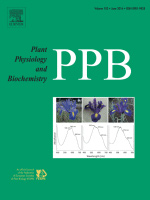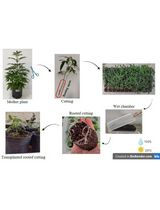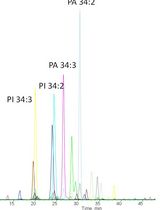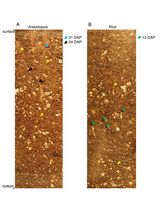- EN - English
- CN - 中文
A Protocol for Flavonols, Kaempferol and Quercetin, Staining in Plant Root Tips
植物根尖中黄酮醇、山奈酚和槲皮素的染色方法
发布: 2020年10月05日第10卷第19期 DOI: 10.21769/BioProtoc.3781 浏览次数: 5957
评审: María Victoria MartinShin‐nosuke HashidaAnonymous reviewer(s)
Abstract
Flavonols are a subclass of flavonoids of the group of plant secondary metabolites. In planta, flavonols play various functions such as antioxidant and natural regulator of auxin polar transport. Many lines of evidence have shown that flavonols also contribute to human health in anti-oxidation, anti-inflammation, and even prevention some types of cancer. Several methods have been utilized to measure flavonols such as high-performance liquid chromatography (HPLC), liquid chromatography-mass spectrometry (LC-MS), and diphenylboric acid-2-aminoethyl ester (DPBA) staining. While HPLC or LC-MS can quantitatively determine the level of flavonols, DPBA staining can provide an in-situ view of flavonols accumulation in the plants. In this protocol, a detailed procedure for staining the flavonols in Arabidopsis root tips is described. Five-day-old Arabidopsis seedlings are soaked in a solution containing DPBA and latterly the flavonols (kaempferol and quercetin) can be observed under a confocal microscope.
Keywords: DPBA staining (DPBA 染色)Background
In Arabidopsis, flavonols are biosynthesized from a condensation reaction between one molecule of p-coumaroyl-CoA and three molecules of malonyl-CoA. Lewis et al. (2011) found that quercetin, but not kaempferol, is an inhibitor of root basipetal auxin transport. In addition, flavonols also function as an efficient antioxidant for plants and humans as well. A prior study investigated that DPBA can fluoresce when it interacts with flavonols (Sheahan and Rechnitz, 1992). Based on this, DPBA has been widely applied to detect the flavonols accumulation in the plants (Nguyen et al., 2013, 2015 and 2016; Vu et al., 2015). Here, a detailed protocol for DPBA-based detection of flavonols is described. Apart from Arabidopsis, this protocol can be also used for other plants such as Brassica napus L. (Vu et al., 2015). Since other plant species may have a thicker and larger tissue than Arabidopsis, a vacuum can be applied to facilitate the penetration of DPBA into the plant tissues.
Materials and Reagents
- Square dishes for tissue culture [External dimension (mm): 126.40 x 126.40 x 20.00] (SPL Life Sciences, catalog number: 10125)
- 1.5 ml micro-tubes (Eppendorf, catalog number: 0030121589)
- Microscope slides (dimensions: 76 x 26 mm; thickness: 1 mm) (Marienfeld, catalog number: 1000200)
- Transparent slides coverslips (dimensions: 60 x 24 mm; thickness: 0.170 mm ± 0.005 mm) (Marienfeld, catalog number: 0107242)
- Arabidopsis thaliana
- Diphenylboric acid-2-aminoethyl ester (DPBA) (Sigma-Aldrich, catalog number: D9754 )
- Triton X-100 (Sigma-Aldrich, catalog number: T8787 )
- Murashige & Skoog medium including B5 vitamins (Duchefa Biochemie, catalog number: M0231 )
- Phyto Agar (Duchefa Biochemie, catalog number: P1003 )
- Sucrose (Duchefa Biochemie, catalog number: S0809 )
- DPBA staining solution (see Recipes)
Equipment
- Tweezers
- A plant growth chamber
- Micro-tubes rotator
- Pipette
- Confocal microscopy system (Leica, model: SP8 )
Procedure
文章信息
版权信息
© 2020 The Authors; exclusive licensee Bio-protocol LLC.
如何引用
Nguyen, N. H. (2020). A Protocol for Flavonols, Kaempferol and Quercetin, Staining in Plant Root Tips. Bio-protocol 10(19): e3781. DOI: 10.21769/BioProtoc.3781.
分类
植物科学 > 植物生物化学 > 代谢物
植物科学 > 植物生理学 > 表型分析
生物化学 > 其它化合物 > 类黄酮
您对这篇实验方法有问题吗?
在此处发布您的问题,我们将邀请本文作者来回答。同时,我们会将您的问题发布到Bio-protocol Exchange,以便寻求社区成员的帮助。
Share
Bluesky
X
Copy link













